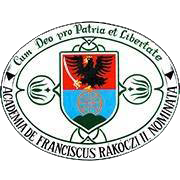Please use this identifier to cite or link to this item:
https://dspace.kmf.uz.ua/jspui/handle/123456789/1458| Title: | Мовна політика і мовний ландшафт: Польська мова на банкнотах Чехословацької Республіки 1919–1938 рр. |
| Other Titles: | Language policy and linguistic landscape: Polish on the banknotes of the Czechoslovak Republic 1919–1938 Polityka językowa i krajobraz językowy: język polski na banknotach Republiki Czechosłowackiej 1919–1938 w latach |
| Authors: | Берегсасі Аніко Beregszászi Anikó Газдаг Вільмош Gazdag Vilmos Черничко Степан Csernicskó István Csernicsko Istvan |
| Keywords: | банкноти;мовна політика;мовний ландшафт;польська мова;Чехословацька Республіка |
| Issue Date: | 2020 |
| Publisher: | Видавництво Житомирського державного університету імені Івана Франка |
| Type: | dc.type.researchStudy |
| Citation: | In Українська полоністика. 2020. Випуск 18. с. 13-29. |
| Series/Report no.: | ;Випуск 18. |
| Abstract: | Резюме. У публікації досліджуються мови, які були представлені в написах різних серій банкнот,
виданих у період між першою та другою світовими війнами (1919–1938 рр.) у
Чехословацькій Республіці. Поряд із портретами історичних діячів, зображеннями, що
стосуються культури та історичного минулого певної нації, присутність (чи відсутність)
на банкнотах мов також є елементом символічної політики та частиною виявлення мовної
політики певної держави. Банкноти розглядаються як елемент мовного ландшафту, а
мовний ландшафт – як віддзеркалення мовної політики, її своєрідне публічне вираження. У
статті проаналізовані причини появи й зникнення польської мови як однієї з мов
національних меншин Чехословацької Республіки на банкнотах зазначеного періоду. Автори
дійшли до висновків, що навіть держави, які видають багатомовні банкноти, гарантують,
що державна мова повинна бути в панівній позиції. Abstrakt. Artykuł analizuje języki, które występowały w napisach różnych serii banknotów emitowanych w okresie między I a II wojną światową (1919–1938) w Republice Czechosłowackiej. Obok portretów postaci historycznych, obrazów związanych z kulturą i historyczną przeszłością danego narodu, obecność (lub nieobecność) na banknotach języków jest także elementem polityki symbolicznej i elementem identyfikacji polityki językowej danego państwa. Banknoty traktowane są jako element krajobrazu językowego, a krajobraz językowy – jako odzwierciedlenie polityki językowej, jej pierwotny wyraz publiczny. Artykuł analizuje przyczyny pojawiania się i zanikania języka polskiego jako jednego z języków mniejszości narodowych Republiki Czechosłowackiej na banknotach z określonego okresu. Autorzy dochodzą do wniosku, że nawet państwa, emitując banknoty wielojęzyczne, gwarantują dominującą pozycję języka państwowego. Abstract. This publication examines which languages were represented in the inscriptions of different series of banknotes issued between the First and Second World Wars (1919–1938) in the Czechoslovak Republiс. Along with portraits of historical figures, images relating to the culture and history of a particular nation, the presence (or absence) of banknotes of languages is also an element of symbolic politics and part of the manifestation of the language policy of a particular state. Banknotes are seen as an element of the linguistic landscape, and the linguistic landscape is understood as a reflection of language policy, its peculiar public expression. The main purpose of the study was to show why the Polish language appeared on the banknotes of Czechoslovakia, which were in circulation between 1919 and 1925, and to analyse why the Polish language disappeared from paper money after 1926. Placed languages on banknotes are subject to quantitative and qualitative analysis, examines the location of languages, the relationship between them. It is shown that the concept of "linguistic landscape" is not only an analysis of signs in public places, it can be interpreted and investigated in various ways. We believe that part of the increasingly interpreted linguistic landscape may also be the analysis of languages used in monetary units. It is noted that the historical approach to the analysis of the linguistic landscape helps to clarify aspects of language policy and linguistic ideologies. The authors conclude that even states that issue multilingual banknotes guarantee that the state language should be in a dominant position. The article shows why the Ukrainian, German, Polish and Hungarian languages appeared next to Czech and Slovak on the banknotes of the first issue of the Czechoslovak Republic. The Polish language was reflected on Czechoslovak banknotes that were in circulation between 1919–1925, but Prague removed the Polish language from paper money after 1926. The article analyses the reasons for the appearance and disappearance of the Polish language on the banknotes of the Czechoslovak Republic. Keywords: banknotes, language policy, linguistic landscape, polish language, Czechoslovak Republic. |
| Description: | http://real.mtak.hu/123079/1/182020_v1025_03.pdf |
| URI: | http://dspace.kmf.uz.ua:8080/jspui/handle/123456789/1458 |
| ISSN: | 2220-4555 |
| metadata.dc.rights.uri: | http://creativecommons.org/licenses/by-nc-nd/3.0/us/ |
| Appears in Collections: | Beregszászi Anikó Csernicskó István Gazdag Vilmos |
Files in This Item:
| File | Description | Size | Format | |
|---|---|---|---|---|
| Beregszaszi_A_Gazdag_V_Movna_polityka_i_movnyi_landshaft_2020.pdf | In Українська полоністика. 2020. Випуск 18. с. 13-29. | 2.31 MB | Adobe PDF | View/Open |
This item is licensed under a Creative Commons License





